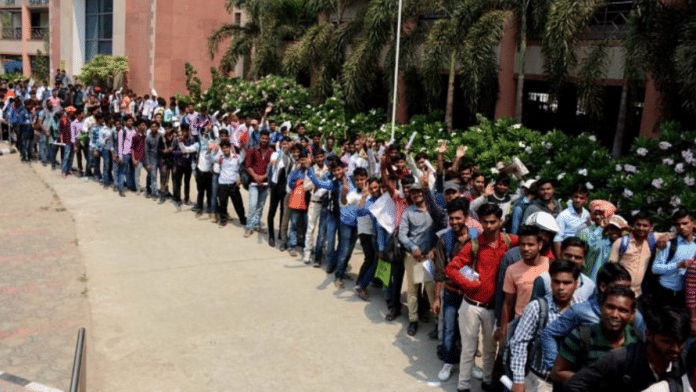Thank you dear subscribers, we are overwhelmed with your response.
Your Turn is a unique section from ThePrint featuring points of view from its subscribers. If you are a subscriber, have a point of view, please send it to us. If not, do subscribe here: https://theprint.in/subscribe/
The youth of a nation are its strongest pillar, the foundation upon which the structures of society, polity, and economy stand. For these structures to thrive, the youth must embody discipline, diligence, self-confidence, and integrity.
Fortunately, India has long been blessed with such demographic strength. Historically, this potential enabled India to contribute an estimated 24% of global GDP in the early 18th century. However, centuries of colonial exploitation severely eroded the country’s self-confidence and institutional integrity, weakening the very fabric of its youthful dynamism.
Recognizing this historical setback, the Hon’ble Prime Minister urged the nation to embrace the “Panch Pran” (Five Resolves) as a roadmap to a developed India by 2047: (1) A developed India, (2) Freedom from the colonial mindset, (3) Pride in our heritage, (4) Unity, and (5) A strong sense of civic duty.
For these goals to materialize, Indian youth must rise to the occasion—equipped not just with optimism, but with skills, values, and a mission-oriented mindset. The Economic Survey 2024-25 rightly emphasized that India’s demographic dividend is a window of opportunity, but one that comes with immense responsibility.
A key challenge today is the issue of employability. Despite rising education levels, a large section of youth remains unemployed or underemployed. According to the Periodic Labor Force Survey (PLFS), the unemployment rate among youth aged 15-29 stood at 10.2% in 2023-24.
In a world driven by fast-evolving technologies like Artificial Intelligence, India needs an agile and future-ready workforce. This demands a fundamental reorientation of our skilling and educational ecosystem.
The government has taken positive steps in this direction. The latest Union Budget proposed the establishment of Artificial Intelligence Centers of Excellence in top institutions and a ₹1 lakh crore financing corpus to catalyze private-sector innovation in research and development. States must complement this by expanding autonomy to academic and research institutions, and by nurturing innovation hubs across the country.
However, economic growth must be inclusive to be sustainable. The Bharat model of inclusive development rests on three pillars: (1) An Indic market economy that blends the efficiency of markets with the empathy of Indian cultural values—neither extreme socialism nor unregulated capitalism; (2) Antyodaya and Empowerment, ensuring that the last person in the queue is not forgotten, and that all citizens have the opportunity to learn and earn; and (3) A holistic, multi-sectoral approach to development that gives equal weight to agriculture, industry, and services.
To enable this Bharat model to flourish, a leaner and more facilitative state architecture is essential. Experts have also revived the call for the state to limit its role in direct economic activity.
Echoing the 1970s doctrine that “the government has no business being in business,” the Prime Minister advocates “minimum government, maximum governance.” Letting market forces operate efficiently allows the state to focus on sectors where private investment is limited, such as infrastructure and high-gestation industries.
Public capital expenditure, especially in manufacturing and allied sectors, has the potential to reignite India’s industrial base. This shift is crucial for generating quality jobs. Small and medium enterprises (SMEs), which form the backbone of Indian industry, must receive special attention.
As Sir M. Visvesvaraya once said- “Technological development will increase the production of the country and a sense of self-reliance will be born among the countrymen. Self-reliance will increase the level of self-confidence and a sense of hard work will be born in the new generation. Hard work is the key to national development.”
India’s economy today is a bright spot in a turbulent global environment. The stock market reached record highs in December 2024, and the continued inflow of foreign direct investment (FDI) signals growing global confidence in India’s economic trajectory.
But to fully realize our potential, we must focus on policy execution, good governance, and improving quality of life. Only then can we reverse the brain drain and retain our best minds to serve the nation.
The slogan “Make India Great Again” is not just a catchphrase—it is a call to action. It requires a foundation of mutual trust between the youth and the state. With the energy of India’s young population and the strategic vision of the Indian state, there is no limit to what the country can achieve. The time to act is now.
These pieces are being published as they have been received – they have not been edited/fact-checked by ThePrint.



Very beautifully worded and highly insightful article on harnessing India’s demographic strength in the journey to becoming a developed nation by 2047.
This young author/writer seems to possess a great potential. Keep up the great work.
All The Best for your future projects.